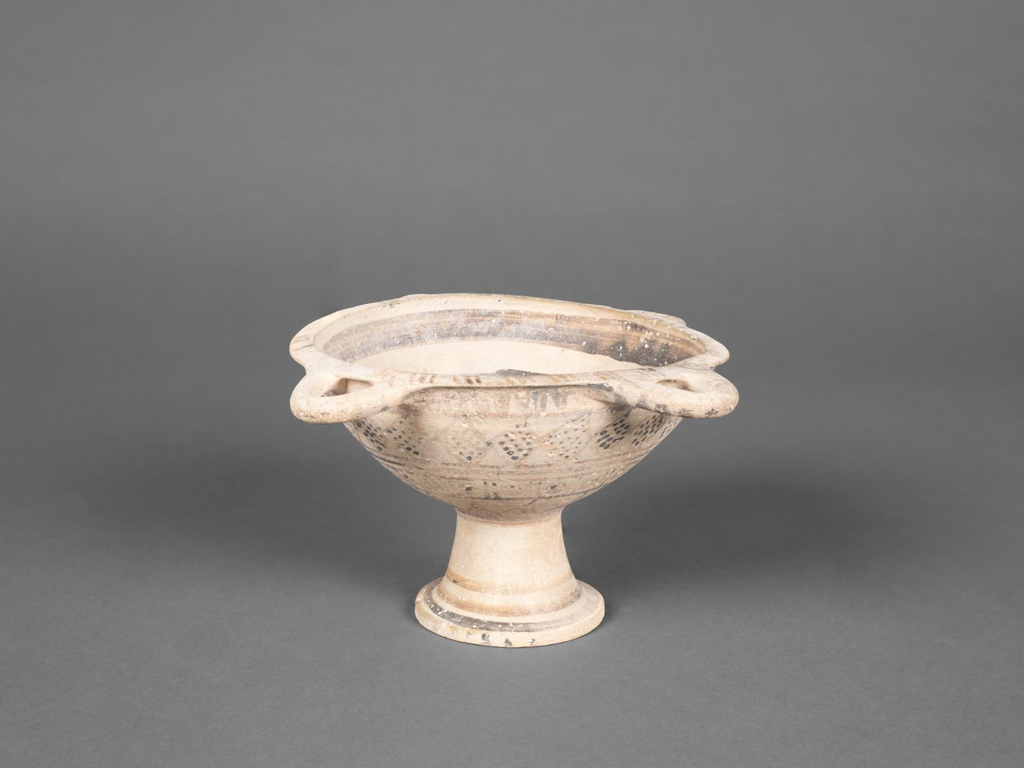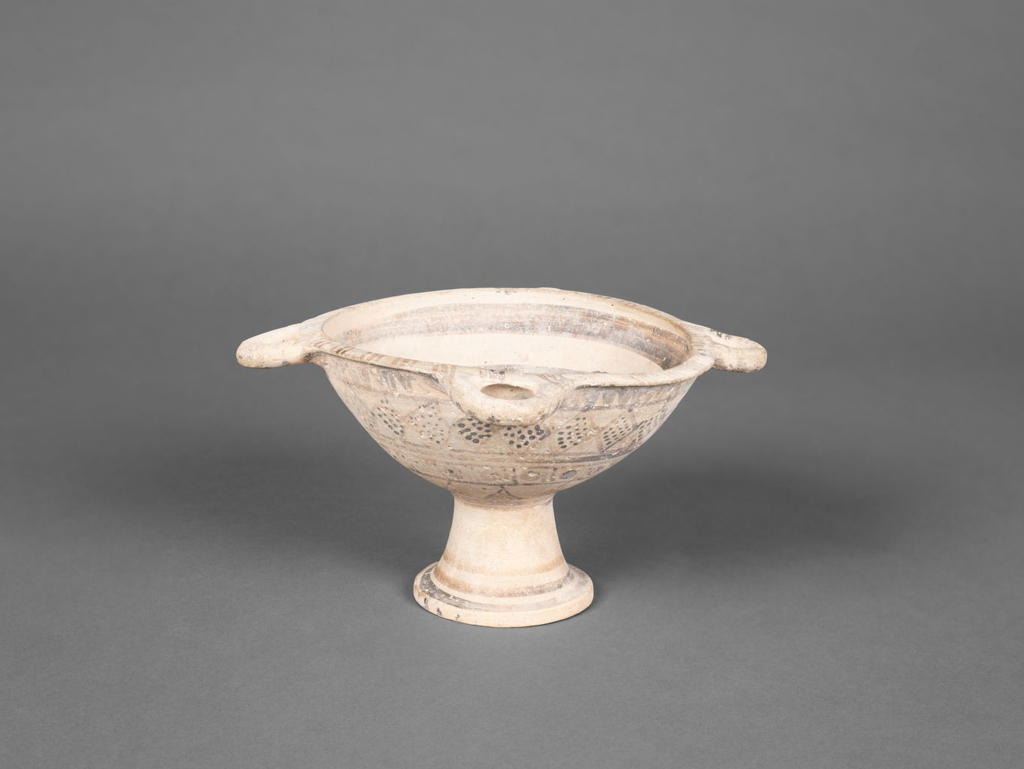Mycenaean ceramics, named for the Bronze Age (ca. 1750-1060 BCE) palatial culture on mainland Greece originally identified at Mycenae, can be found more broadly around the Mediterranean. In fact, this stemmed vessel most likely originates in Cyprus based on its shape and decorative motifs.
Arne Furumark, a Swedish archaeologist, studied Mycenean pottery in depth and developed a specific typology published in his book The Mycenaean Pottery: Analysis and Classification (1941). This vase can be identified as Furumark’s shape 310, belonging to the Late Helladic (LH) IIIC period (ca. 1200-1060 BCE), with decoration that also dates to that period. This decoration, including triangles with crossing interior lines, bands of paneled isolated discs, dotted lozenges, and hanging pendants, is also consistent with a LH IIIC date. It is one of two Mycenaean vases in the Menil Collection (the other being 1965-16 DJ).
Like many objects acquired prior to 1970, it does not have a known archaeological provenience. It was previously in the collection of Stanislaw Huberman, a Polish activist, and then later his brother Bronsilaw Huberman, a famous violinist.







